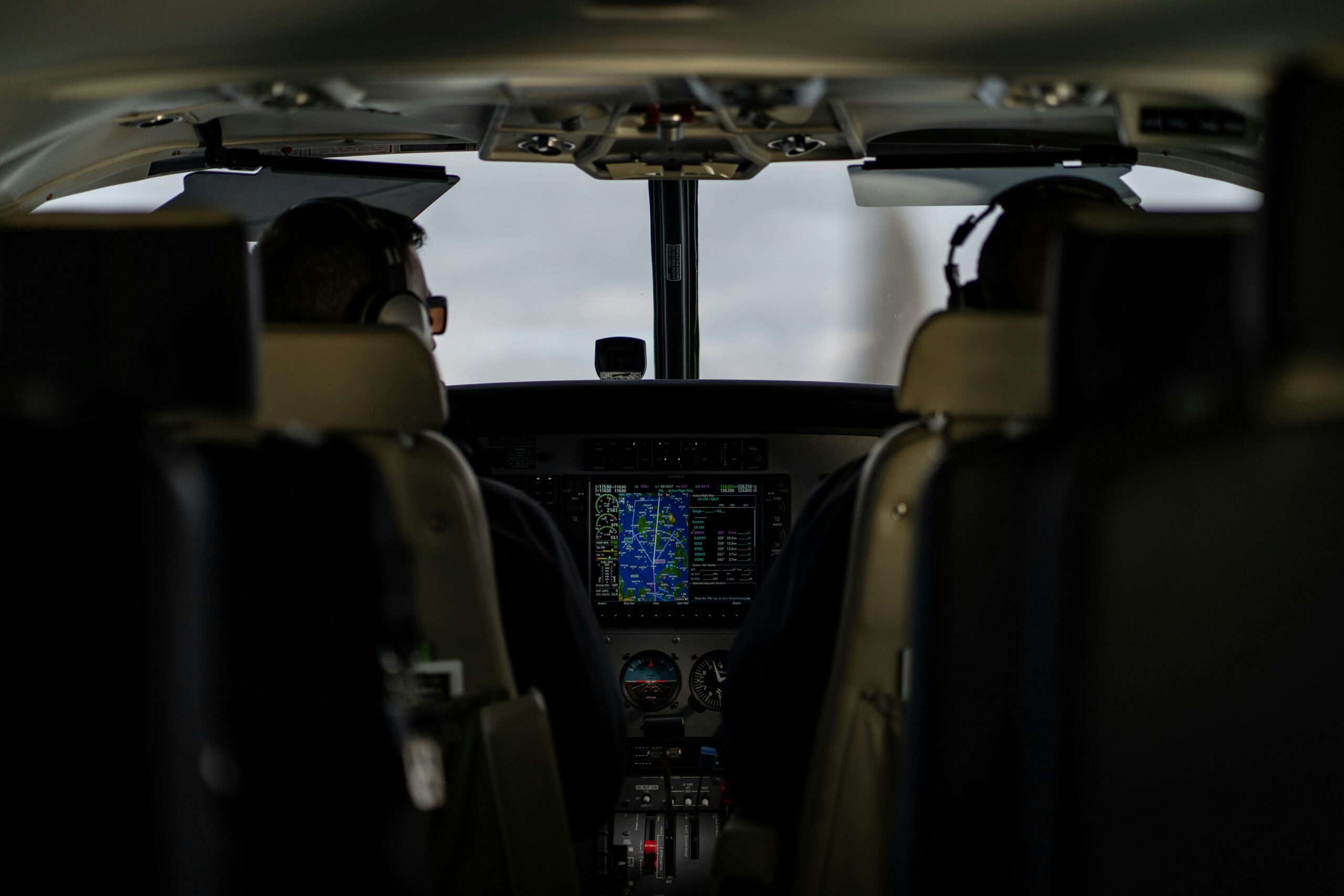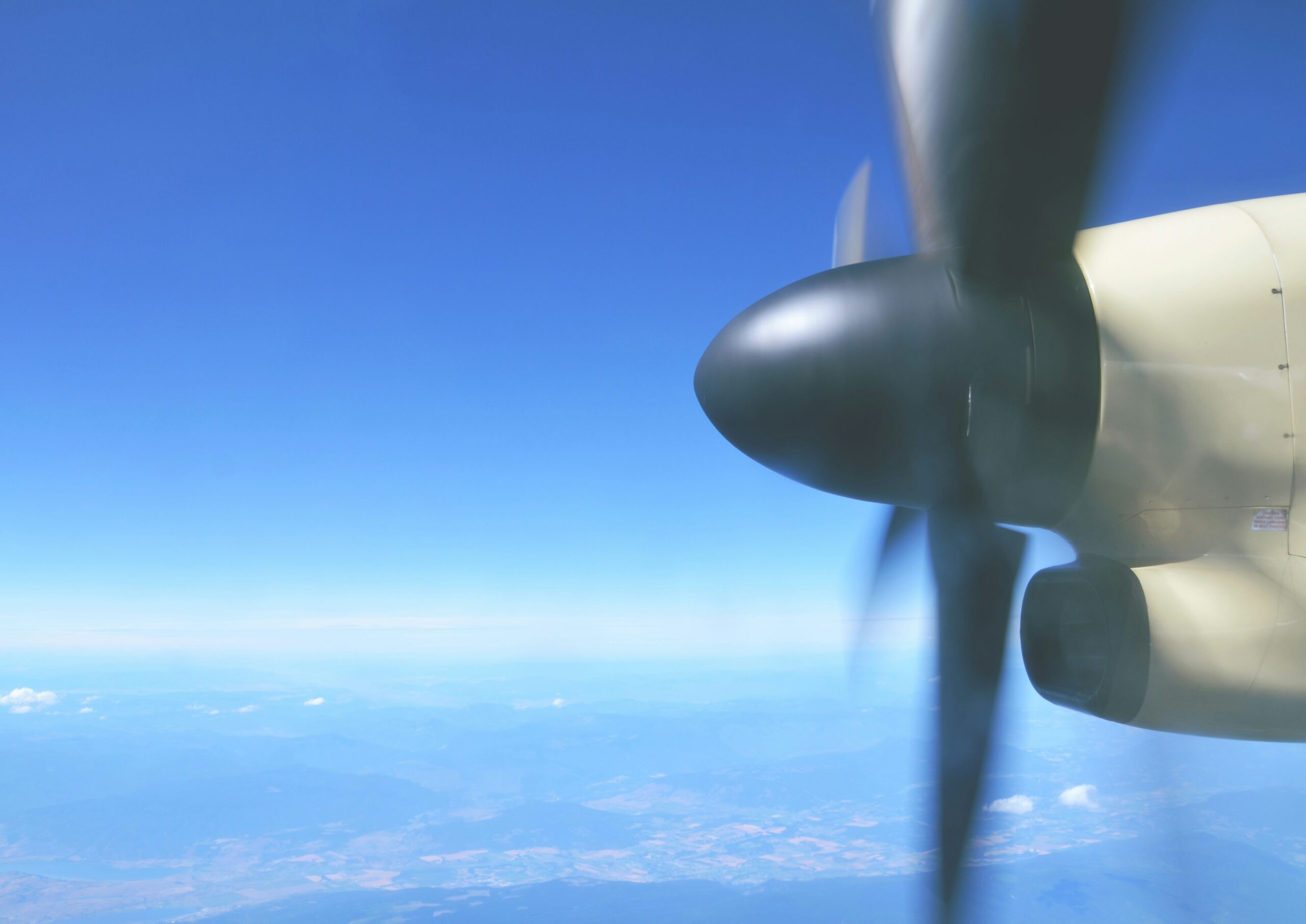Table of Contents
1. Introduction to the Eagle 150B
Welcome back. What you’re going to watch today is on the Eagle 150B, not this Eagle 150B. If you asked me a few months ago to describe one to you, I probably wouldn’t have been able to do it. It’s a very unique airplane, the way the wings are set up, and the stall characteristics of the airplane are very benign. You’re gonna get a kick out of it. Carrie Lafleur, the pilot and owner of this one, takes us up for a ride, so enjoy. Flying the Eagle 150B truly offers a different kind of general aviation experience.
There are brakes on both sides. You just press hard on the pedals. Go ahead, both — press on now, they’re way down. Well, bring it back to you. There’s an electric motor right there. I’ll be hole one, two, turn — oh, that’s cool! It doesn’t have an actual toe brake pedal. The whole bar moves, and it’s all connected. The benches aren’t long. Easiest like that. You know, I haven’t I’ve never flown a Long-EZ. I could. I think they are, it’d be wrong and good.
Hot oil at oil pressure. Samson freaks. Good. I wanted to go to the party. Wants everyone to bring the flaps up. Great visibility thing. I don’t want to look like an idiot. All right, there’s always a blooper part. But a lot of people a lot of people are unaware of what this is. They think it’s a home-built or, you know, some kind of Rutan thing.
Now, the closest it comes to being a Rutan design is that it was designed by one of Rutan’s airfoil guys, John Roncz.
2. History and Purpose of the Eagle 150B
So, he built this airplane to be a purpose-built trainer, and it was initially in competition for the Air Force’s initial screening trainer contract when the Slingsby T3s were having all the stall-spin accidents. It ultimately lost out to the Diamond DA20, so it never really took off. Because of that, they scaled back their marketing. They bought up all the examples they had sold in flight schools, and about five of them remain in the States.
They’re all over, you know, the South Pacific, Malaysia, India, New Zealand, Australia, but they ceased production around 2006. It’s kind of an orphaned airplane, but I’ve got a real good parts network up in Wichita. I’m friends with the owner of the company that imported them. Also, his partner is a Southwest Airlines captain in Chicago, so he’ll be there too.
I’m also really good friends with the factory demo pilot who used to fly these back in the late ’90s when they were brand new. He owns two of them. He’s right here at Denton Valley. Oh really — he’s got one here and one up in Wichita. So, I’ll be there. The brain trust on them is still alive and well. He’s got an excellent mechanic who worked on them back in the early 2000s, and I’ve got a handful of spares for it.
You know, there’s a little stupid stuff that is proprietary, but over to the M5 mechanically, there are not a lot of parts that you can’t buy. That’s part of what makes Flying the Eagle 150B a surprisingly manageable and enjoyable experience, even today.
3. Ownership and Experience
How long have I had this one? Coming up on two years. Oddly enough, when I got into GA, I wanted one of these, but I couldn’t find one because there are so few of them. I ended up buying a Grumman Tiger and kept it for about four or five years. One of the initial offers, when I went to sell my Tiger, was from a guy who asked me if I wanted an Eagle 150. I initially declined, but after I sold the Tiger, I thought, “You know, I’m probably never gonna see one of those again — I’d like to play with one for a while.”
So, I went ahead and purchased the airplane from him. He was in Augusta, Georgia, I believe, and I’ve been flying it for a while. Oddly, you’ve seen what I’m doing now — I’ve just got not enough room, not enough money, and not enough time to have three airplanes. So, I’ll let go of this one.
Flying the Eagle 150B has been a fun and fulfilling experience, but this one will probably go if my situation changes. If we end up getting a new hangar — forget a new hangar — I probably won’t be in such a rush to sell it.
But don’t worry. About “three mistakes high,” and we’ll push this thing over to go off with a grin. “Art buried mistakes high” — there, about three mistakes high. What does that mean? Well, I don’t like to do anything or hold my bearings in the airplane unless you’re at least three mistakes high, because I’m famous for mistakes. Flying the Eagle 150B lets you recover from those with ease — it’s that forgiving. And when you’re out there just exploring the sky, flying the Eagle 150B gives you the freedom and safety margin to learn from every flight.
4. Flight Characteristics and Safety
So, you can G it up, and you know it bleeds energy like crazy. But in the pattern, it’s easy to slow down well, because the other stall is weak. You just put a lot of G’s on it, and it just stops. It’s certified in the standard category in the United States, but in the rest of the world, there’s a quick release for the canopy. With that quick release, you can wear a chute and get out of it. It’s impossible to get out of this one, even if you had a chute, as it’s a tip-up.
It rides turbulence pretty well. It’s a three-lifting-surface design, and the tail doesn’t have any downforce on it. So, it’s more like a Piaggio Avanti than it is a Long-EZ — and I’m familiar with that, because I’ve done a walk-around on one of those.
Right now, take the stick — help yourself. It’s very forgiving. It is fully stall-proof. Really. And since it’s stall-proof, it is therefore spin-proof. Oddly enough, one of the complaints that the Air Force had about it is that they couldn’t stall it, and they wanted spin training.
Well, you just killed a bunch of people in the Slingsby T3, and that’s why you’re retiring them — yet you’re complaining that the replacement is unstallable and unspinnable?
Flying the Eagle 150B makes you question what traditional trainers have missed — it’s that stable and safe. And when you’re up there, feeling how it handles even under high G or in turbulence, you truly appreciate what Flying the Eagle 150B is all about.
5. Demonstrating Stall Resistance
So, I’ll demonstrate the low-speed characteristics — it is extremely benign. If you’re over inhospitable terrain or flying at night and had to make a forced landing, climbing like crazy, you could almost configure it, pull the stick back, and just ride it down like a parachute-type push into the ground. Very survivable.
The tub is carbon fiber Kevlar. So, I’m intruding here and telling you, the wings are carbon fiber. “No, thanks!” And it’s covered in a vinyl ester resin. So, it’s built kind of like a boat. Now, as far as the finish goes, it’s a very, very, very strong build. And this is great for nine Gs, you’re saying?
Well, the rest of it — ultimately, when they initially certified it, it broke at like thirteen. So yeah, it’s strong. It’s certified in the standard category, but in the rest of the world, they’re certified to a whole life standard.
Flying the Eagle 150B gives you confidence, knowing how rugged and well-engineered it is. I rest assured that I can’t break it. No kidding. I don’t think you can. I don’t think you could even get this thing going fast enough to put nine Gs on it — it’s a very low inertia airplane. And that’s just another reason why Flying the Eagle 150B stands out from typical light aircraft.
6. Performance and Training Utility
What do you normally cruise at? How about 125 knots? You’re burning, what, five an hour? About six at that point. Yeah. Okay, pull it back to 110, and you’re doing about five. It’s not overpowered — it’s an energy management exercise, flying this airplane.
Okay, but it will get out of its way. It’s a lot faster than a Cessna or, you know, a Cherokee or something like that. Cool. Look at what — 73, 150? As far as training airplanes go, this is probably one of the quicker training airplanes. But it’s a whole lot more fun than a 150 or a Cherokee 140, or something like that.
Trying to get a feel for the rudder — if I need it, it coordinates the turns pretty well. You just lead it with a little bit of rudder, and it comes right around. Wow, that roll rate — that roll response — is amazing. The throttle is under your right hand over there, and if you want to, just slowly pull the power back to idle and just hold altitude, you’ll see what I’m talking about in the slow flight regime.
Flying the Eagle 150B combines performance with fun in a way that’s hard to match in most light aircraft. Whether you’re cruising, training, or practicing slow flight, Flying the Eagle 150B offers a rewarding, responsive flying experience.
7. Stall Handling and Student Safety
You’ll get the airspeed back down to the peg. He’ll still be flying. You keep it all coming. Now, when you get it into the stall, it’ll talk to you — you’ll hear the stall warning in your headset right there. Just keep holding it. Keep pulling. Hold it back.
Now, you’ll notice the elevators are on the stop right now — you can’t pull them back anymore. Yeah. But you still have full roll authority with the stick back. Holy cow, it’s coming down pretty good. I’m gonna go ahead and add power.
Alright, now we’re gonna do the same thing with power on. So keep pulling, keep pulling, keep pulling. Just hold what you’ve got right there. Just keep it right there, and we’ll get into a power-on stall — full roll authority with the stick back. Power-on stall. Put the toes back down.
So, you see how you could put a student in there and not worry about them hurting themselves? That was crazy. I mean, I’ve never— you noticed that the airspeed indicator is back to about 42 knots? I was focusing on my ball because I didn’t want to get it wrong.
You don’t even have to worry about that. You can kick the rudder, and it would just kind of fall off — and then recover. It would fall off and then come right back up into a nose-up attitude. That’s the kind of stall behavior that makes Flying the Eagle 150B such a safe and confidence-building experience for training.
Flying the Eagle 150B in these conditions gives you a true appreciation for how forgiving and well-engineered this aircraft is.
8. Design Features for Stability
The front wing has one more degree of incidence than the rear wing, so it stalls first, but the rear wing never stalls. Okay. And then also, you see these huge stall fences. Outboard of those stall fences, the leading edge is cuffed, and there are vortex generators.
So, what that does is it keeps the span-wise flow from going out over the wingtips. Then, those vortex generators stick that airflow to the ailerons. Okay. And that outboard wingtip out there keeps any kind of wake turbulence, the vortex wingtip vortex from affecting the ailerons. Also, copy that so it’s very bold, very docile in slow flight.
That was amazing. That was cool to see. That’s just the kind of characteristics you want to have in base-to-final. Sure, you know, you cannot pull hard enough on it — you really can’t hurt it. As a matter of fact — I’ll take it back — you got it.
Flying the Eagle 150B shows just how stable and thoughtfully designed an aircraft can be. These aerodynamic safety features are exactly what make Flying the Eagle 150B a standout choice for training and low-speed maneuvering.
9. Landing and Final Approach Behavior
We’ll just put it into, you know, a base-to-final type turn. Alright, I’ll come back on the power, lead off some speed here. I’m gonna go ahead and bring the flaps out all the way. So, you think — you’ve got flaps on the front and the back wing, correct?
Alright, so that’s an approach-type speed right there that’s 60 knots, and we’re doing 500 feet a minute down. Right. And say the runway is over there, and I roll in, and I just overshoot. The student’s tendency is to pull harder. Now I’m pulling clear that?
Okay. Well, you see how far I had to pull that yoke to get it to quit turning? And it was racking. I mean, you would have to be in an overshoot. And I don’t know if you noticed — that was a 180-degree turn. Yeah. In an overshoot, you usually only try to correct under 15 degrees. I was getting there fast.
Oh yeah. I’m gonna bring the brakes in, actually, I’ll go ahead and stall it with the flaps down so you can see, you know, kind of where it stalls. So, there are 2,300 feet. There’s the stall warning. Alright, there’s the nose, try to bring it down to 45 knots. Right there.
Alright. But with the flaps down, you know, it bucks a little bit, but it never really goes into a full break. You still have roll authority the whole time. You’ve got the authority to stay in control. But it’s talking to you that little buffet, that warning you know it’s extremely safe.
Flying the Eagle 150B in approach scenarios gives both instructors and students a wide margin of safety, even during aggressive corrections. That’s the beauty of Flying the Eagle 150B — confidence in every configuration.
10. General Impressions and Closing Thoughts
And he’s going away from this now, probably going, “What the heck is that?” I get that a lot. Pull up to the gas pump, and people come out of the woodwork like, “What the heck is that?” What’s even worse, I don’t get a lot of flight following or talk to ATC hardly at all in this thing. It is kind of just a Saturday afternoon ride, knockaround airplane. But when you do, they’re like, “Say type aircraft?” I say, “Identifier?” I have no clue.
Now, what is it officially? It’s an Eagle — it’s an Eagle 150P, and the I-P-O is Echo Alpha Golf X-ray. They throw fits when I say that, and they start asking if it’s a homebuilt. There’s the Christian Eagle, or — I get that misconception pretty often.
There are 125 knots — it could give a mother of others — and hands off the whole time. Now it’s hands-on. You can maintain that for three and a half to four hours. It holds about 26 gallons. Well, you can probably get away with flying the Eagle 150B for three and a half to four hours with reserves. You pull it back a bit for better endurance.
I like the answer when someone asks, “What kind of range do you guys see?” Well, the airplane can keep going for hours, but my bladder can only do three. There’s no vacuum system; it’s all electric gyros. Okay, the engine monitoring system is Bishop Microsystems, which was big back in the late ’90s. Then they kind of disappeared, so those are a bit of a challenge. There are still a few spare parts out there for them, but you could probably get a JPI with a field approval or something like that if those ever finally gave up.
Now, if you have a flat panel over there, this one’s minor; this is the only one. Well, it’s kind of funny. If I try to put these flaps down, you can override me with that one. That’s dual entry — that’s technically the instructor station, right? Okay. If a student were trying to put the flaps out, you could override it over there. Gotcha. They both essentially do the same thing, but that one does have priority.
This sporty little thing — man, this seems fun. Appreciate you taking me up.
“Propwash traffic, one-five-one Echo Alpha, three miles to the northwest, inbound for one-seven, Propwash.” If that’s E38, now going into Alliance — cool.
Airline pilots make the worst GA pilots. I just blame any of my bad habits on that.
“Propwash traffic, one-five-one Echo Alpha, base one-seven.” Rush it — it’ll come right out of the sky with the power back and the flaps out. That’s one unique thing — flaps on both wings.
This is what flying the Eagle 150B is all about — a light, responsive, and attention-grabbing aircraft that turns heads on the ramp and makes every flight an experience.
1. Is the Eagle 150B safe for training?
Yes, it’s extremely safe with stall-proof and spin-proof characteristics, making it ideal for student training.
2. What makes the Eagle 150B handle well?
Its three-lifting-surface design and vortex generators provide excellent stability and control, even in turbulence or aggressive maneuvers.
3. How long can you fly the Eagle 150B?
It has an endurance of about 3.5 to 4 hours with reserves, thanks to its 26-gallon fuel capacity.


